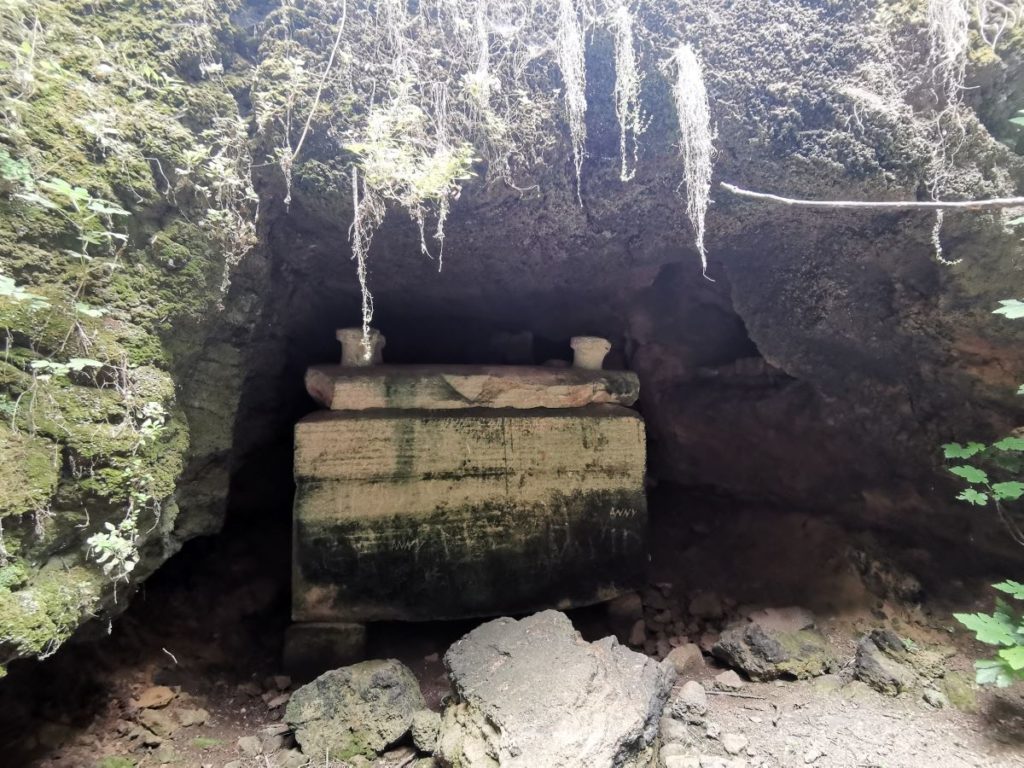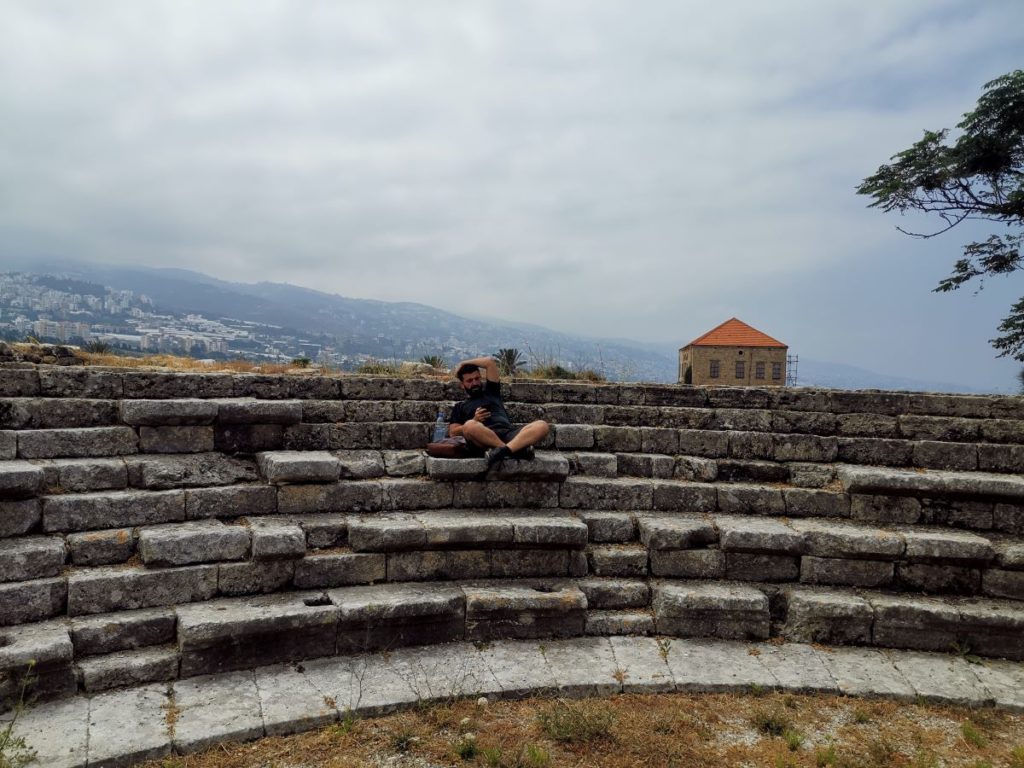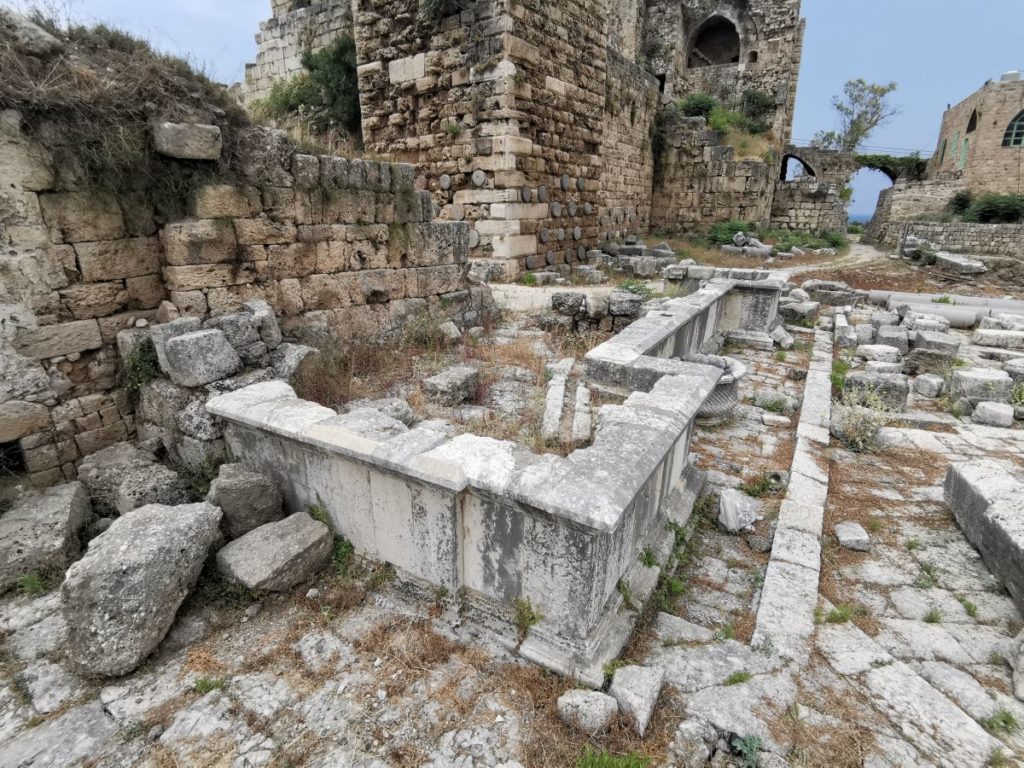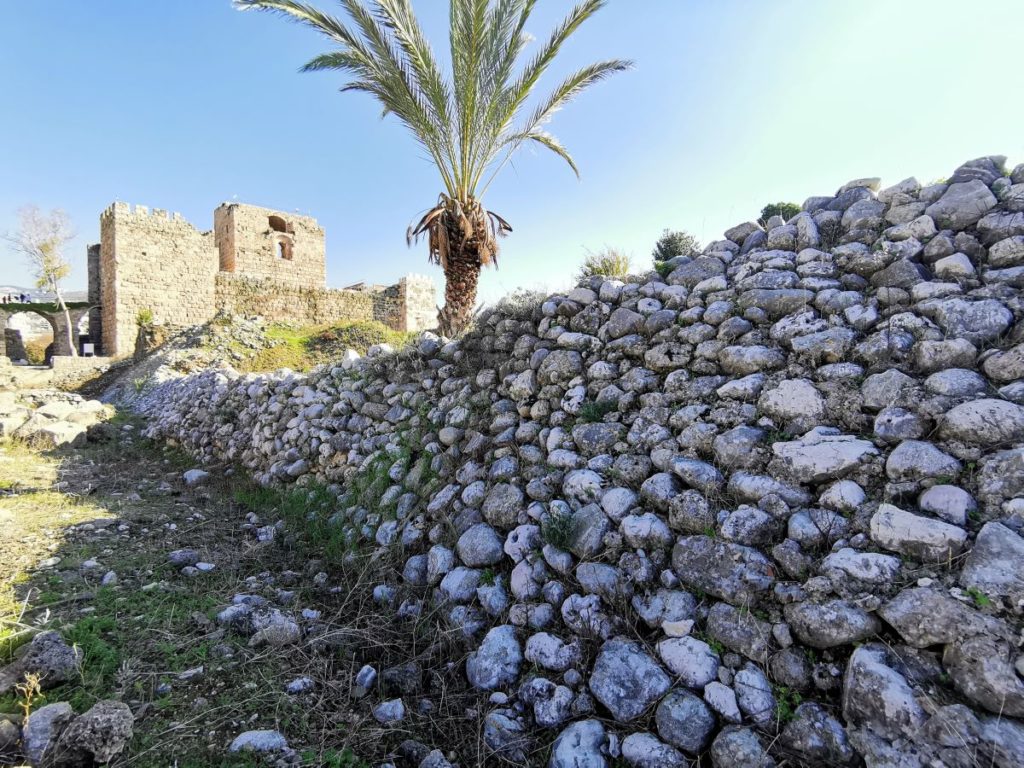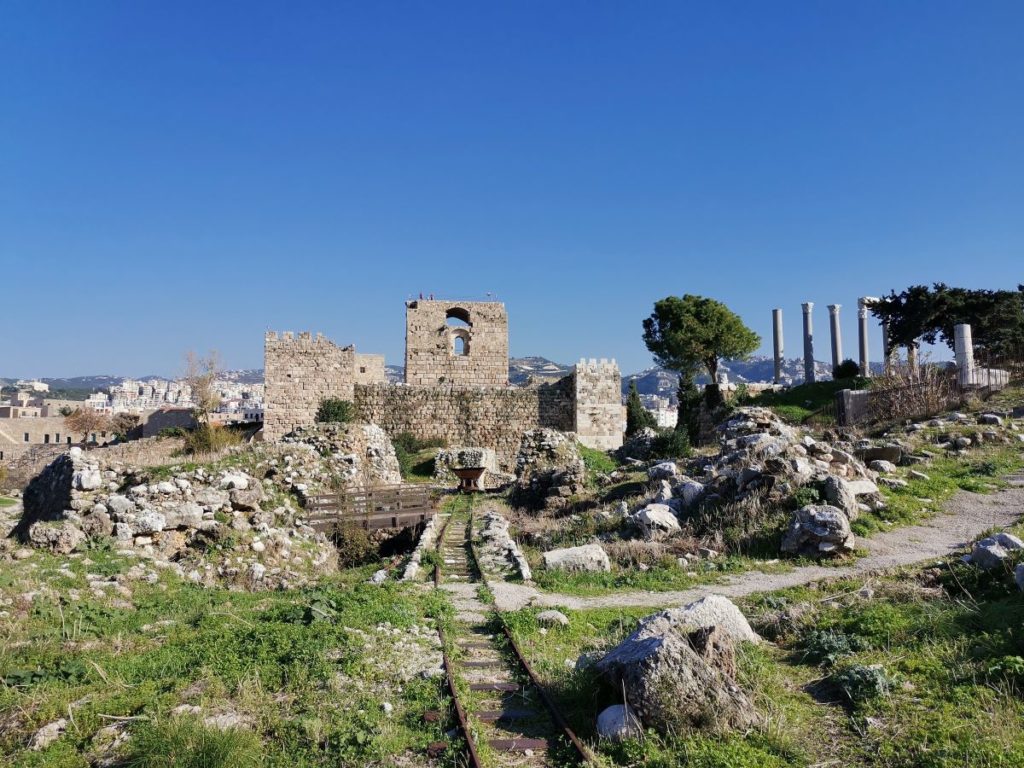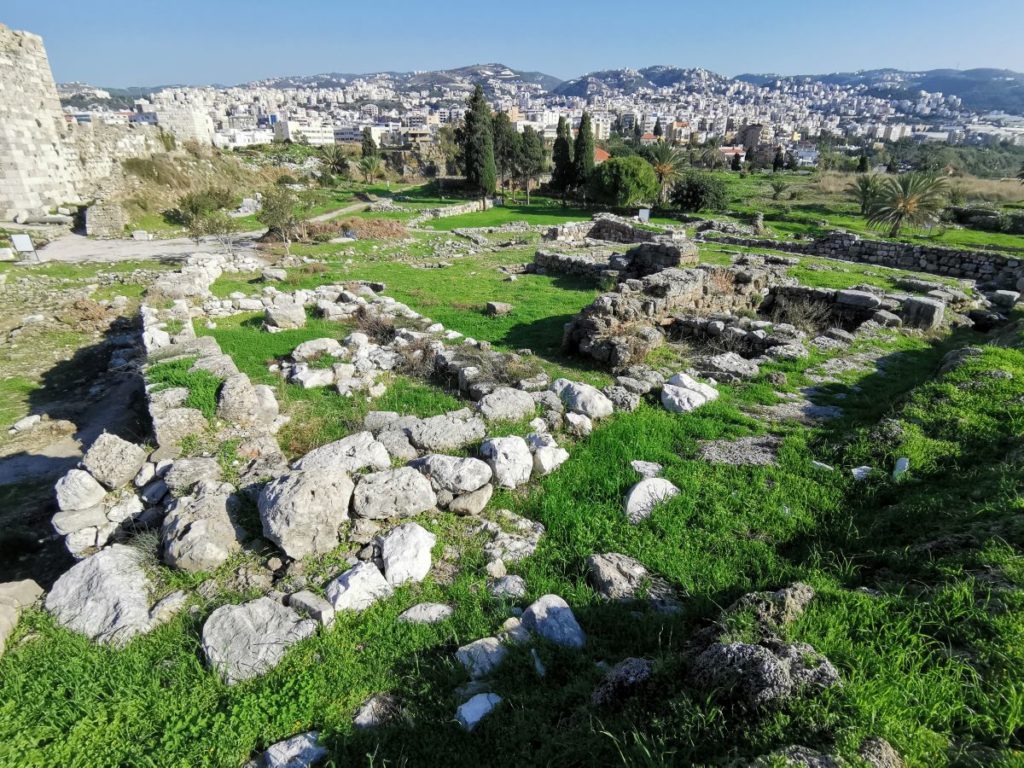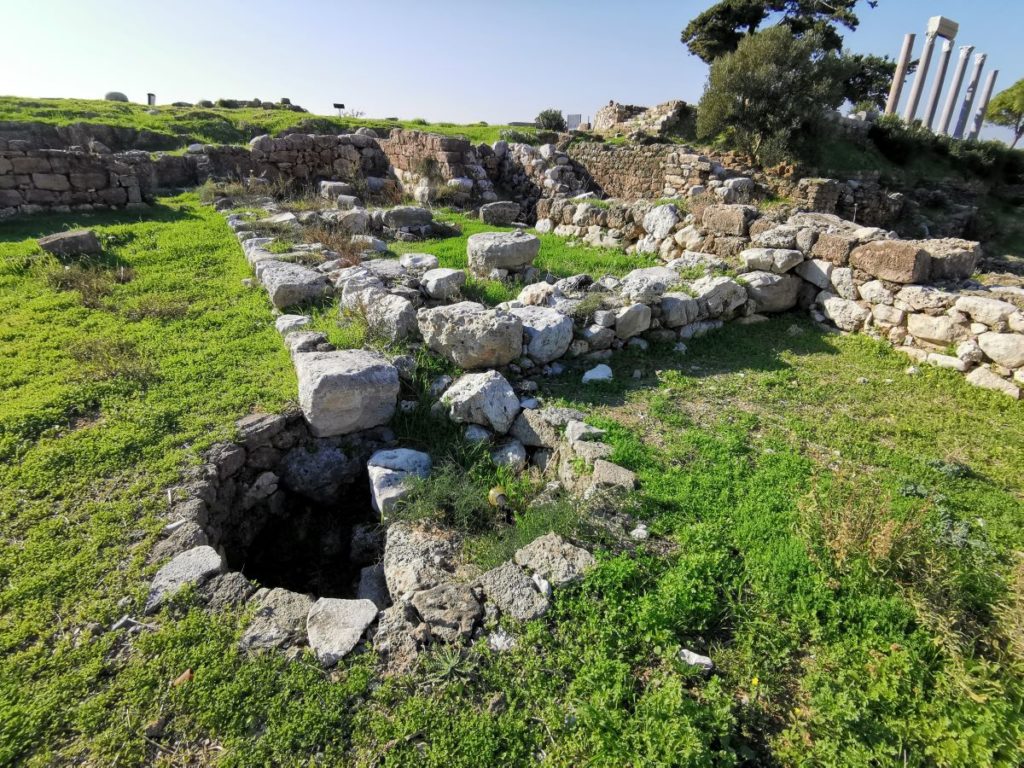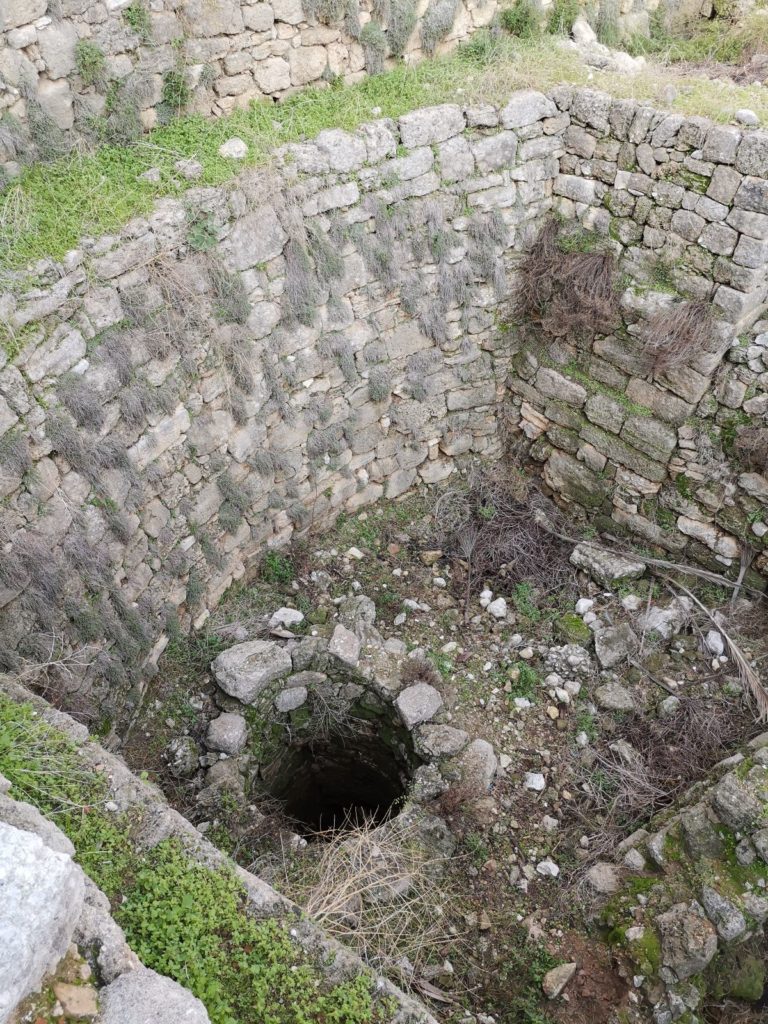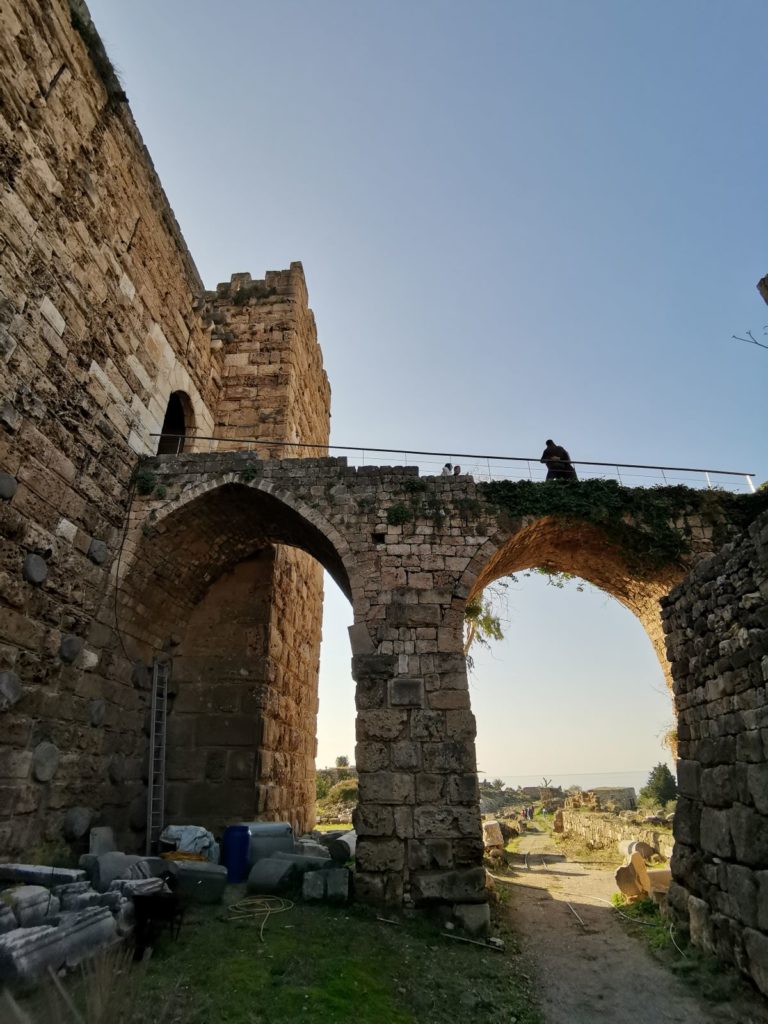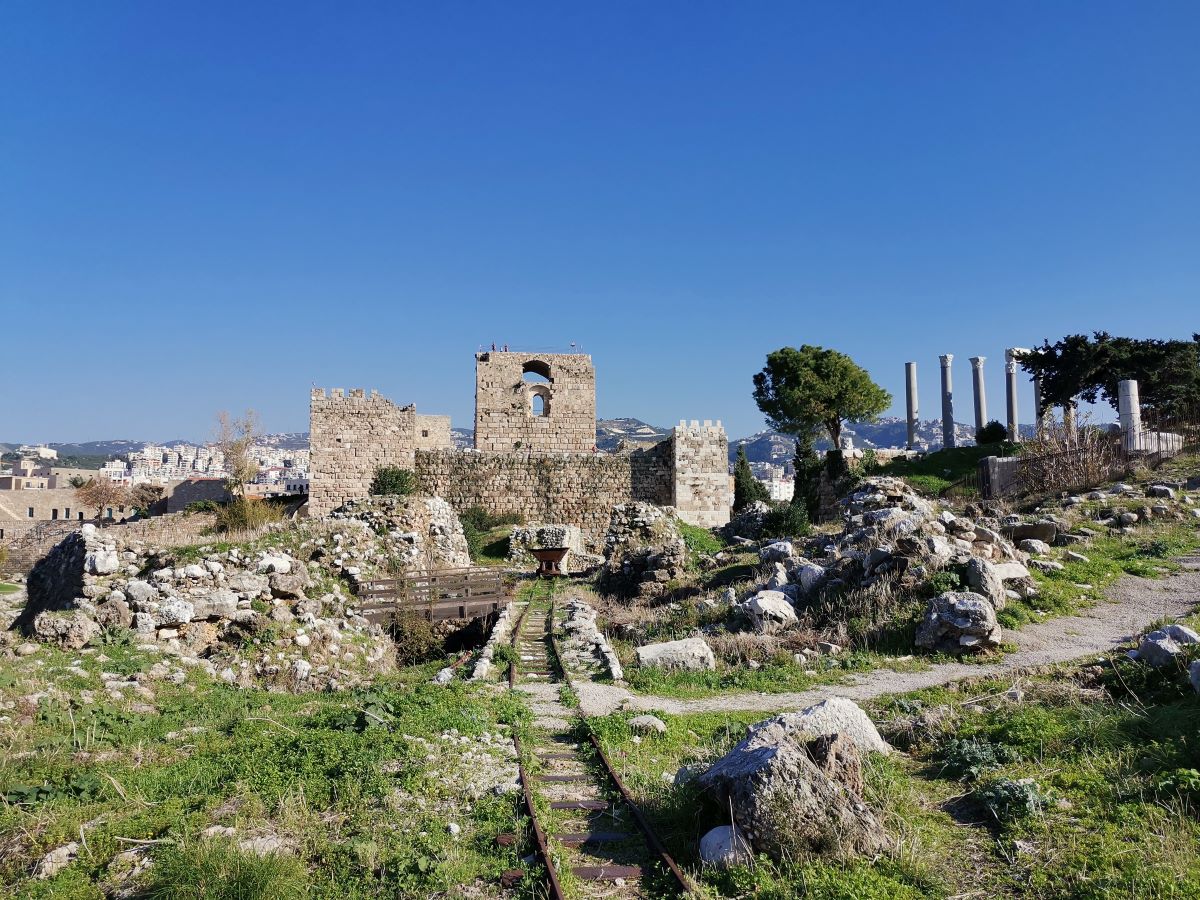Byblos is known to be one of the oldest continuous inhabited city in the world, and the birthplace of the Phoenician alphabet that would later spread around the world. According to the Phoenician writer Sanchuniathon, Byblos is the first city of the Phoenicians.
Etymology
Kpn – in Egyptian hieroglyphic records
Gubla – in the Akkadian cuneiform Amarna letters
Gbl – in Phoenician and Punic inscriptions
Geval – in the Hebrew Bible
Byblos – named by the Greeks
Byblus – named by the Romans
Gibelet / Giblet – during the crusader era, these names were used for Byblos Castle and its associated lordship.
Jbeil (جبيل) – Its present Arabic name Jbeil (جبيل)
Location
Located at the central crossroad of trade and cultural exchange between East and West, and surrounded by rich and vital resources, Byblos benefited economically from its geographical position by mastering the art of maritime trade and monopolizing strategic naval trade routes along the Mediterranean Sea, passing by Egypt, Greece, Anatolia, modern Spain and Portugal.
Timeline
8800 BC – 4000 BC – during the Neolithic age, Byblos was a small village, relying mostly on fishing, which pushed settlers to acquire ship building and seafaring skills that would help their descendants to conquer economically the Mediterranean sea in centuries to come.
3000 BC – Byblos gradually developed into a prosperous city and an economic maritime power. Its Port being the most important timber shipping center in the eastern Mediterranean, it fed the Egyptians with cedar timber for centuries to come.
2150 BC – Byblos was invaded by the Amorites, a Semitic people who seem to have emerged from western Mesopotamia.
1725 BC – Byblos was invaded by the Hyksos, a Semitic people from probable Levantine origin.
1580 BC – Byblos became a satellite within the Egyptian empire
1200 BC -1000 BC – Birth of the Phoenician alphabet
738 BC – 627 BC – Byblos became under Assyrian rule
539 BC – Byblos became a satellite within the Persian Empire, consequently transforming its port for military usage. The 1st fortress of the city was built under Persian rule.
332 BC – Byblos became prosperous during the Hellenistic era
64 BC – 635 AD – Byblos city maintained its prosperity and expansion under Roman and Byzantine rule. It also witnessed the construction of theaters and colonnades.
551 AD – Byblos suffer heavy damage during the 551 AD earthquake that shook Lebanon, Syria and Palestine
637 AD – Byblos lost its trading role under Umayyad rule and became a frontier of war between Muslims and Christians for centuries to come
1098 AD – Byblos became part of the County of Tripoli during the crusader era, and a crusader fortress was erected on site. The city suffered from back and forth battles between the crusaders and the Muslim armies.
1400 AD – onward – Byblos fell into neglect and was forgotten for centuries to come
1920 AD – onward – Byblos went into extensive archeological excavations that revealed its rich history
Archeological site
Byblos archeological site features remnants of neighborhoods, settlements, temples, general structures, necropolises, ports, quarries, fortresses and fortifications.
The successive layers of civilizations are reflected in the structural elements of the site, which can be identified in a detailed manner through a map located at the main entrance of the archeological site.
Structures from the New Stone Age to the Middle Bronze Age (4,500 BC – 1,600 BC)
The structures that fall within this timeline are identified by remnants of houses, settlements, royal and trade buildings, temples, sacred wells, necropolis, city walls and the sea and land gates. It is important to describe some of those elements:
The Houses and settlements – one can find remnants of the oldest houses composed from one room with a gravel floor and a wooden roof, up until modern residence with 3 rooms and built from local sand stone.
The Temples – the oldest temples in Lebanon know to date are found in the archeological site of Byblos, starting with the temple of Baalat Gebal, the city goddess of Byblos (2,800 BC) followed by the “Temple en L” (2,600 BC) and the Temple of the Obelisks (1,900 – 1,600 BC).
The King’s well – The King’s well was at the core of the religious life of the city, which saw the building of several temples surrounding the sacred source.
The Royal Necropolis – a rock-cut tomb at a depth of 12 meters from the surface was accidently discovered during excavations, which housed several tombs of the kings of Byblos whose names were identified as Abishemu, Ibshemuadi, and Ahiram, the latter having his sarcophagus baring the Phoenician alphabet, making it the most important sarcophagus of all.
Structures from the Iron Age (550 – 330 BC)
The main structure of this period is the Persian fortress, located on the South-East of the archeological site. The fortress had at its core residential and religious buildings. On its eastern wall, one can see the emblem of the Persian Empire – The Lion’s head.
Structures from the Roman and Byzantine Era (335 BC – 635 AD)
The main structures that fall within this timeline are the amphitheater, the roman colonnaded street that is linked to the Temple of Baalat Gebal, the Roman nympheum located at the foot of the crusader fortress, the Roman road located on the north-eastern side of the site, and the foundations of the Byzantine houses located at the main entrance of the archeological site.
Structures from the Arab and Crusader Era (635 AD – 1300 AD)
The main structures that fall within this timeline are the imposing crusader fortress of Byblos, the crusader church of Saint-John, the Mamlouk tower of the port of Byblos, the Sultan Abd al-Majid mosque and the northern fortifications of the city.
Karim Sokhn
Tour Operator & Tour Guide
